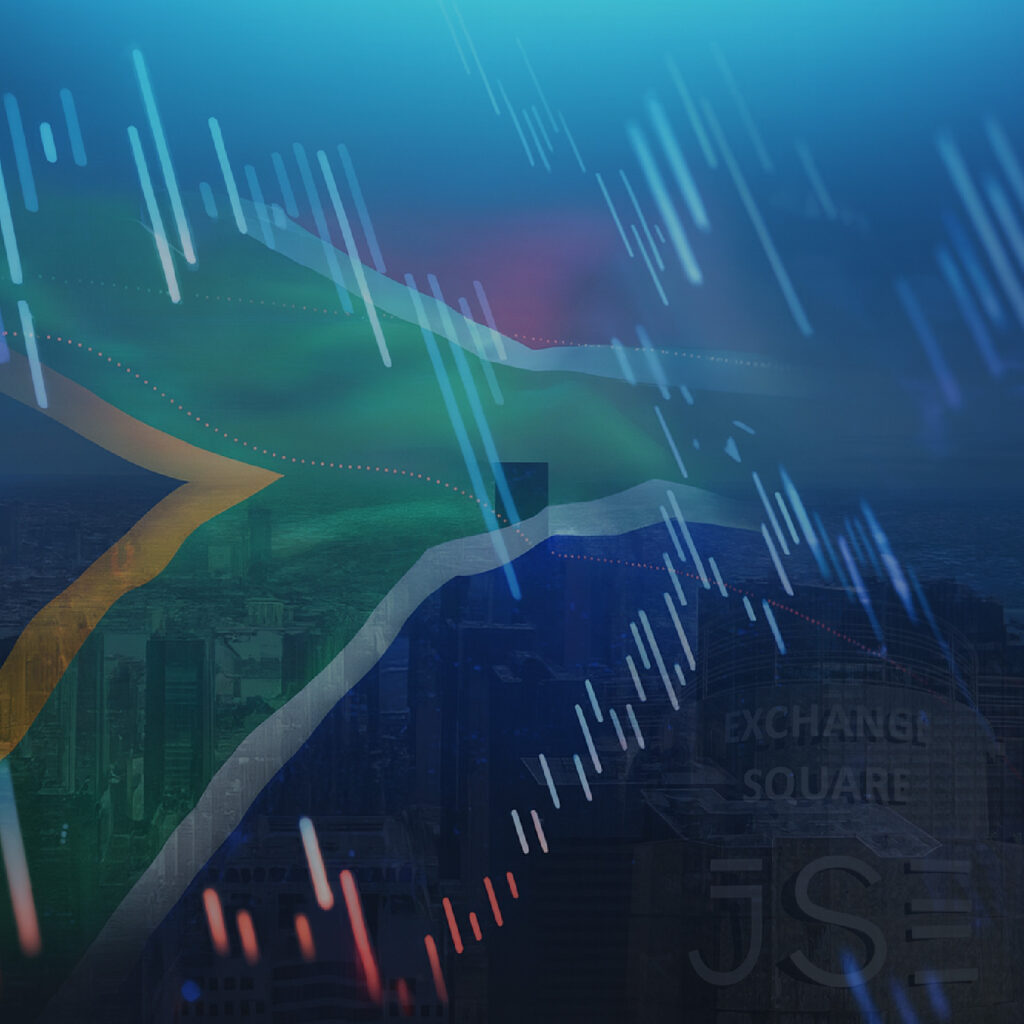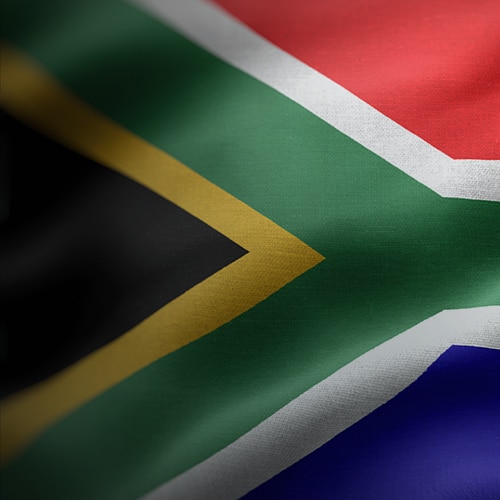Coffee Table Economics (CTE) with Anchor, written by Casey Sprake, is published periodically and offers a thoughtful mix of research, analysis, and commentary. Covering everything from inflation and central bank dynamics to global market moves and socio-political events, CTE distils the forces shaping the economy into insights that are both accessible and easy to digest – making sense of the complex so you do not have to.
Executive summary
In this week’s edition, we highlight the following:
- The shape of inequality: America’s economy draws a K. The US economy may still be growing- but not for everyone. Recent data and earnings point to a “K-shaped” recovery, where affluent households thrive on rising markets and home values, while lower- and middle-income Americans tighten budgets amid high rates and slowing job gains. The result is an economy expanding at two speeds- one of prosperity, and one of pressure.
- Gold’s gilded moment: Who mines it, who buys it, and why it matters. The world’s oldest safe-haven asset is shining brighter than ever. In 2025, gold has broken record after record- fuelled by a softer US dollar, heavy central bank buying, and deepening global uncertainty. From Africa’s booming mines to Beijing’s vaults and Switzerland’s balance sheets, gold’s resurgence tells a broader story: in an era of shifting power, rising geopolitical tension, and fading trust in paper promises, the world is once again anchoring its faith in the metal that never rusts.
- Operation Vulindlela: From reform blueprint to implementation engine. Once dismissed as a “rogue” Treasury idea, Operation Vulindlela (OV) has evolved into one of the most effective policy implementation frameworks in democratic South Africa (SA). From breaking Eskom’s monopoly and unlocking the long-stalled digital spectrum allocation, to opening rail corridors and reforming water governance, the initiative is steadily transforming key network industries. Now in its second phase, Vulindlela 2 expands its focus to local government, spatial integration, and digital infrastructure- signalling that structural reform in SA is no longer just a plan, but a process in motion.
The shape of inequality: America’s economy draws a K
Recent earnings results and consumer data are painting a clear picture of a bifurcated US economy- one that increasingly resembles a “K-shape.” At the top of the “K,” wealthier households continue to thrive, spending freely on luxury goods, travel, and premium experiences, while bottom, middle- and lower-income Americans are tightening their belts, squeezed by stubborn inflation, high interest rates, and a cooling labour market. The story is not exactly new, but it is beginning to gain notable traction across popular financial market discourse.
The divide is evident across nearly every major sector. The affluent are benefitting from a strong equity market (the S&P 500, considered the best single index for measuring overall US equity market performance, is up c. 17.5% to end October) and from the continued appreciation of their homes in a chronically undersupplied property market. By contrast, households without such assets face stagnant wages and rising costs, with many now living paycheck to paycheck. The number of Americans drawing unemployment benefits for multiple weeks recently hit a four-year high- a telling signal of how uneven the recovery has become. Auto repossessions are up 12% YTD, even as the average new car price passed US$50,000 for the first time. Airline executives say sales of premium seats are outpacing economy-class bookings. At Coca-Cola, CEO James Quincey notes that sales of higher-end brands like Topo Chico and Smartwater are booming, while demand for standard Coke has shifted to discount retailers. Apple has guided for double-digit revenue growth of 10%-12% YoY for its current quarter to end December 2025 (1Q26), a forecast driven by strong demand for the new iPhone 17 line-up, which starts at an estimated US$799. This is yet another sign that the top end of the consumer market remains resilient. In short, affluent consumers continue to drive growth in premium segments, while lower-income consumers trade down, delay purchases, and stretch every dollar.
It is not just anecdotal. According to Moody’s Analytics, the country’s highest earners now account for a growing share of total consumer spending. Even US Federal Reserve (Fed) Chair Jerome Powell acknowledged the split, saying that “many big consumer-facing companies are reporting a bifurcated economy- consumers at the lower end are struggling and buying less, while those at the higher end continue to spend.” This divergence in spending patterns captures the essence of the K-shaped economy: the upward leg represents those whose wealth compounds through asset ownership, while the downward leg reflects those who face stagnating real wages, limited job mobility, and rising living costs.
The forces behind this divide are profoundly structural. The wealthier half of America has been buoyed by asset inflation- equities, housing, and investment portfolios have all risen sharply. These households also enjoy stronger job security, flexible work arrangements, and access to credit at lower cost. Meanwhile, less affluent Americans remain more exposed to cyclical industries and rising debt-servicing costs. Renters, in particular, have borne the brunt of tight housing supply and surging rental inflation. At the same time, many who once benefitted from pandemic-era savings or stimulus buffers have now exhausted them. Economist Betsey Stevenson of the University of Michigan warns that the real danger of a K-shaped economy lies not just in inequality, but in the potential for “social and political instability” if the divergence deepens further.
Ironically, the few years following the COVID-19 pandemic marked one of the rare moments when America’s wealth gap briefly narrowed. Fiscal stimulus and enhanced unemployment benefits gave lower-income households a short-lived leg up. Wages grew faster than inflation, and millions of households refinanced their mortgages at ultra-low rates. For a fleeting moment, the bottom leg of the “K” bent upward. But the sugar rush did not last. As stimulus measures faded and the Fed raised interest rates to combat inflation, the familiar divides re-emerged. Mortgage rates climbed to multi-decade highs, inflation eroded wage gains, and social safety nets were gradually rolled back.
The bottom line:
Repairing a K-shaped economy is no small task. The policy challenge lies in ensuring that overall growth momentum is not undermined while tackling wage stagnation, housing affordability, and access to quality education and healthcare. It is crucial to ensure that monetary tightening does not disproportionately harm those least equipped to absorb the shock. For now, the US economy continues its twin-track trajectory: the top spends, the bottom strains. The divergence has become both the symptom and the story of America’s post-pandemic recovery: an economy still expanding, but not for everyone.
Gold’s gilded moment: Who mines it, who buys it, and why it matters
Gold has once again stolen the spotlight. Long regarded as the world’s ultimate store of value (prized by central banks, investors, and jewellers alike), the yellow metal has surged to fresh record highs in 2025 (+52.5% YTD), buoyed by a softer US dollar, robust official-sector buying, and a growing sense of global uncertainty. As the world wobbles between trade tensions, shifting monetary cycles, and geopolitical instability, gold has reasserted its timeless role as a financial refuge. However, behind the glittering headlines lies a deeper story -one that stretches from Africa’s mines to Beijing’s vaults. Understanding who produces the world’s gold, and who is stockpiling it, reveals much about the global balance of economic power and how countries manage risk in an increasingly volatile world.
Gold production remains remarkably concentrated, with a handful of regions shaping global supply. According to the World Gold Council, Africa now leads the world in terms of gold output, producing around 1,010 tonnes in 2023. Ghana, Mali, and SA together account for more than one-third of that total, with Ghana firmly established as the continent’s top producer at 141 tonnes (in 2024), narrowly edging out Mali (100 tonnes) and SA (99 tonnes). The continent’s mineral wealth continues to underpin export earnings and fiscal revenues, though political instability, logistical bottlenecks, and energy constraints have kept some producers from reaching full potential.
Beyond Africa, Asia and Eurasia remain equally influential. China is still the world’s largest national producer, mining roughly 380 tonnes of gold in 2023. Its production network, spread across Shandong, Henan, and Inner Mongolia, reflects both the scale and state coordination behind the sector. Russia follows closely with 330 tonnes, its mining industry largely insulated from Western sanctions thanks to strong domestic demand and expanding trade with non-Western partners. Together, China and Russia account for nearly 20% of global output, underscoring how major geopolitical players also dominate the world’s gold supply chain.
In the West, Australia continues to stand tall as the leading producer, with 284 tonnes of output in 2023, anchoring Oceania’s total of 346 tonnes. The Americas, too, remain a powerful force: North America generated 500 tonnes, led by Canada (202 tonnes), the US (158 tonnes), and Mexico (140 tonnes). Further south, Latin America added 519 tonnes, with Peru, Brazil, and Colombia collectively making the region a key supplier to global refining and export markets. Combined, the Americas contribute just over one-fifth of total world gold production- a reminder that, while Africa leads in volume, the Western Hemisphere remains a critical pillar of supply stability.
If miners shape the supply, central banks are increasingly defining demand. Over the past two years, the official sector has become one of the most important drivers behind gold’s rally, buying record quantities of bullion to diversify reserves and hedge against geopolitical risk. According to the World Gold Council, central banks purchased more than 1,000 tonnes of gold in 2024 – one of the highest levels in modern history. These sustained purchases reflect both strategic foresight and shifting sentiment about the global financial order. Leading this accumulation is China, whose central bank has quietly but consistently added to its gold holdings for 18 consecutive months. These purchases form part of a broader reserve-management strategy. With total foreign reserves exceeding US$3.5trn (the largest in the world), China’s vast holdings reflect years of trade surpluses and a deliberate policy of currency management. When the People’s Bank of China intervenes in foreign exchange markets by buying foreign currencies to prevent the yuan from appreciating too quickly, it injects renminbi into circulation. To offset the inflationary effects of such intervention, it employs a strategy known as sterilisation, tightening monetary policy through higher reserve requirements or open-market operations. In this environment, gold plays a critical role: it is a politically neutral asset that diversifies away from US dollar dependency, reinforces financial stability, and symbolises long-term strength in the face of global volatility.
Other countries have followed suit. Russia, India, and several emerging economies across the Middle East and Southeast Asia have all increased their gold holdings, viewing the metal as a shield against currency risk and Western financial sanctions. For many of these economies, gold represents not just a store of value but a statement of sovereignty -an assertion of independence of sorts, in a world where financial systems are increasingly fragmented. Further west, a smaller but strategically significant player remains at the heart of the global gold ecosystem: Switzerland. Though not a major producer, it is one of the world’s largest holders and refiners of gold, a legacy of its safe-haven status and robust financial institutions. Following the 2008 global financial crisis (GFC), the Swiss National Bank (SNB) intervened heavily to curb the franc’s sharp appreciation by accumulating vast foreign reserves. While that policy expanded its balance sheet significantly, recent years have seen a reversal. By selling foreign currencies, the SNB has sought to counter inflationary pressures and stabilise domestic prices. Gold remains a core element of this delicate balancing act.
The bottom line
What makes gold’s current rally particularly striking is that it is unfolding without the typical backdrop of runaway inflation or a collapsing US dollar. Instead, the metal’s ascent reflects a convergence of factors: softer global monetary conditions, heightened geopolitical tension, and strategic diversification by both investors and policymakers. With interest rates edging lower and returns on bonds diminishing, non-yielding assets like gold have become increasingly attractive once again. Meanwhile, uncertainty (from tariff wars to elections and fiscal strains) continues to push both institutional and retail investors toward tangible stores of value. From African mines to Asian vaults and Swiss balance sheets, gold’s story in 2025 captures the intersection of geology, geopolitics, and global finance. Its renewed strength is less about speculation and more about security- essentially a collective vote of confidence in something real amid a world of digital and political flux. In uncertain times, trust still gleams brightest in gold.
Operation Vulindlela: From reform blueprint to implementation engine
Over the past two decades, SA has seen a succession of economic reform blueprints – from the Accelerated and Shared Growth Initiative for South Africa (ASGISA) and the New Growth Path (NGP) to the National Development Plan (NDP) and the ANC’s 10-point plan. Yet, none have matched OV’s tangible implementation progress. OV’s origins trace back to a 2019 National Treasury discussion paper on structural reforms. This was the then-Finance Minister Tito Mboweni’s attempt to outline a pragmatic path to unlock growth. Initially branded “rogue” and accused of championing neoliberal ideas, the paper would, within a year, form the foundation of the government’s Economic Reconstruction and Recovery Plan (ERRP) in the wake of the pandemic. To drive this plan, a dedicated reform unit- Project Vulindlela (meaning to make way in isiZulu) was created as a joint initiative between the Presidency and National Treasury. Its mandate: to unblock structural bottlenecks and fast-track reforms that could restore confidence, investment, and productivity.
Phase I of OV focused on five critical areas:
- Electricity.
- Digital spectrum and telecommunications.
- Water.
- Freight logistics (rail and ports).
- Visas and skilled migration.
Across each of these sectors, the common objective was to “open up” closed, state-dominated systems and introduce competition, efficiency, and private-sector participation—Eskom’s dominance over every stage of generation and supply long entrenched inefficiency. OV helped drive regulatory and legislative reform to open the electricity market to independent power producers (IPPs) and enable direct power trading. These reforms have already produced real-world outcomes: Industrial users can now contract directly with renewable producers, and new entrants are reshaping the energy landscape. While distribution remains a challenge, the shift from monopoly to market is well underway- a remarkable policy transition by any measure.
For nearly a decade, SA’s telecommunications sector remained gridlocked — caught in a web of political disputes and legal challenges that delayed the release of vital radio spectrum for 4G and 5G networks. Through OV’s coordination, that stalemate was finally broken. The long-awaited spectrum auction, held in March 2022, generated R14.5bn for the state and, more importantly, unlocked a new wave of investment in advanced digital infrastructure. It stands as a clear example of how focused reform and inter-institutional cooperation can translate policy intent into tangible economic outcomes.
In the water sector, licensing backlogs have been cleared and approval times reduced from 300 to 90 days. The reinstatement of the Blue Drop, Green Drop, and No-Drop systems has restored transparency in water quality and infrastructure monitoring. Eleven large-scale bulk-water projects, worth more than R156bn, are underway. Vulindlela has also championed reforms to ringfence municipal utilities and introduce licensing for water service providers, enabling hybrid models that combine public accountability with private-sector efficiency.
By allowing private operators to access state-owned rail and port infrastructure, OV has introduced long-awaited competition to Transnet’s monopolised systems. Eleven freight corridors have been opened for private participation, with 25 preferred bidders selected. At ports, new concession models are in motion (most notably at Durban), marking a structural shift toward mixed public-private management.
Modernising visa and immigration processes has been another crucial focus. Digital systems and updated regulations are easing entry for investors, professionals, and tourists alike – vital for a globally competitive economy.
The success of the first phase has laid the foundation for Vulindlela 2, launched under the Government of National Unity (GNU) and backed by multiple coalition partners, including the DA. This new phase retains the original reform priorities while expanding the focus to three new areas:
- Local government reform.
- Spatial integration and housing.
- Digital public infrastructure.
The latest National Treasury Phase II progress report (2Q25) underscores that implementation momentum remains strong. Of the 30 reforms under the seven focus areas:
- 3% are completed,
- 44% are on track,
- 40% are delayed but advancing, and
- 13% face significant challenges requiring intervention.
Encouragingly, progress is being recorded across both legacy and new reform areas:
- Electricity: The National Transmission Company of SA has finalised a draft Market Code and submitted its market operator license application to the National Energy Regulator of SA (NERSA), advancing toward a functional, competitive electricity market.
- Freight logistics: Eleven train-operating companies have been allocated capacity across 41 routes, paving the way for private-sector investment in rail.
- Water and sanitation: The Water Services Amendment Bill has been introduced to Parliament, while steps are underway to establish the National Water Resources Agency, a key milestone for governance reform.
- Local government: Implementation of Metro Trading Services reforms has begun, incentivising metros to turn around their electricity and water services.
- Public administration: The Public Service Commission Bill has passed, expanding oversight to municipal levels and strengthening accountability.
The bottom line
OV’s greatest achievement lies not only in its tangible policy outcomes but in institutionalising a culture of execution -something long missing in SA’s reform history. It represents a shift from a “developmental state” dominated by state monopolies to a partnership state built on collaboration between government, business, and society. While challenges remain (especially at the municipal level and in sustaining political will), Phase II of OV is proving that reform continuity is possible. Momentum is being maintained, delivery is being tracked, and outcomes are measurable. The train, it seems, has truly left the station, and this time, it is moving forward.




